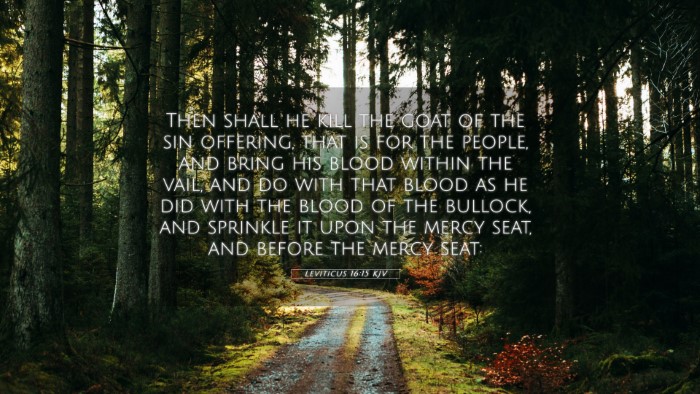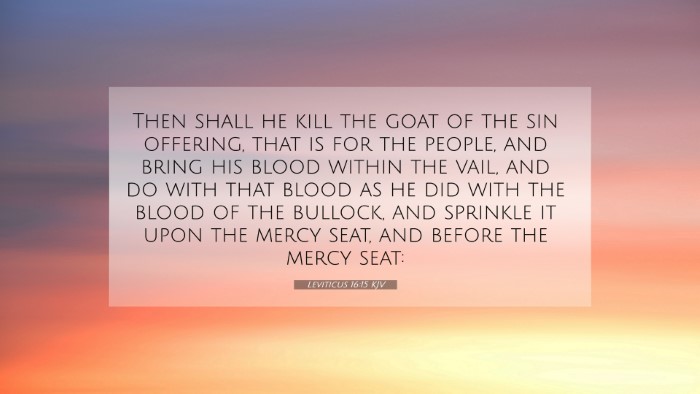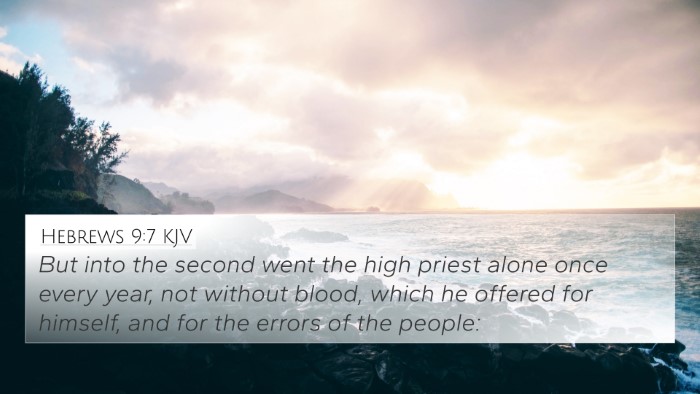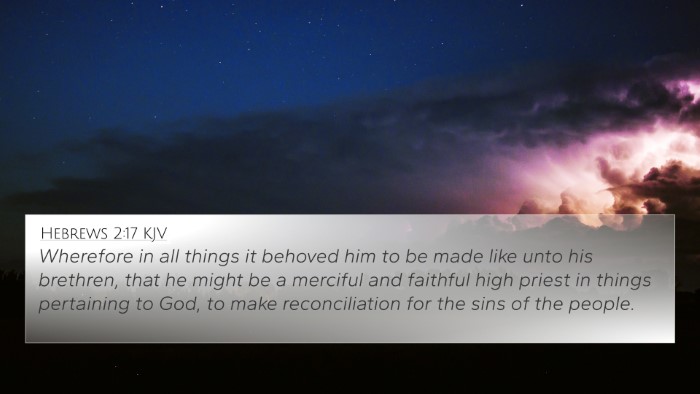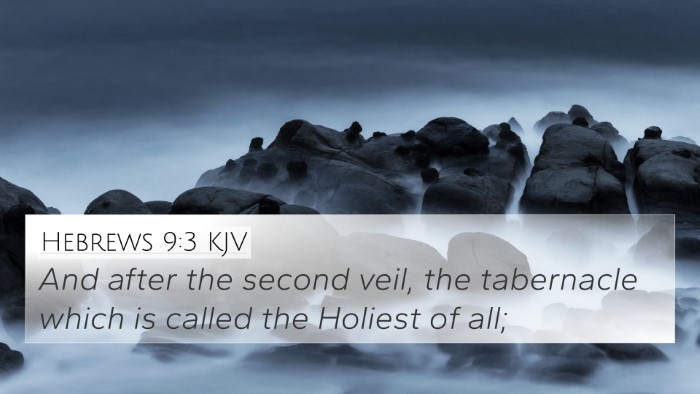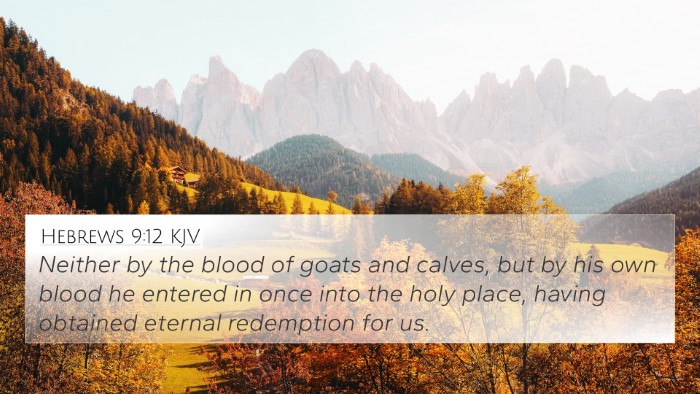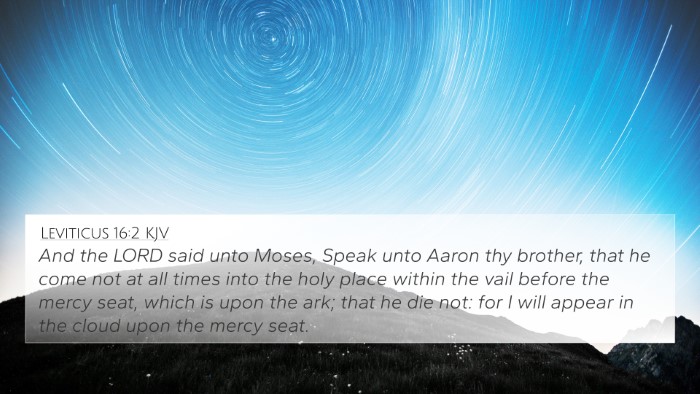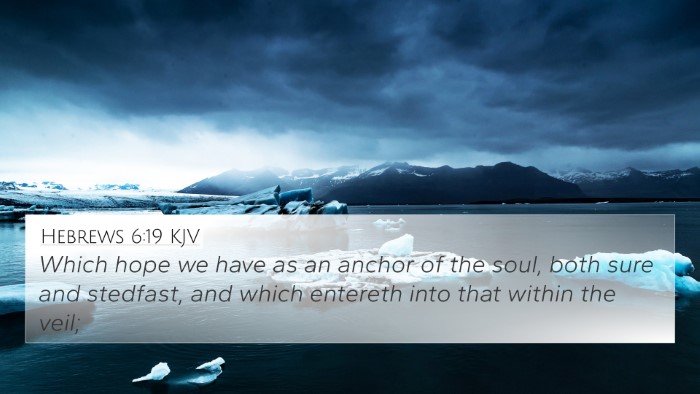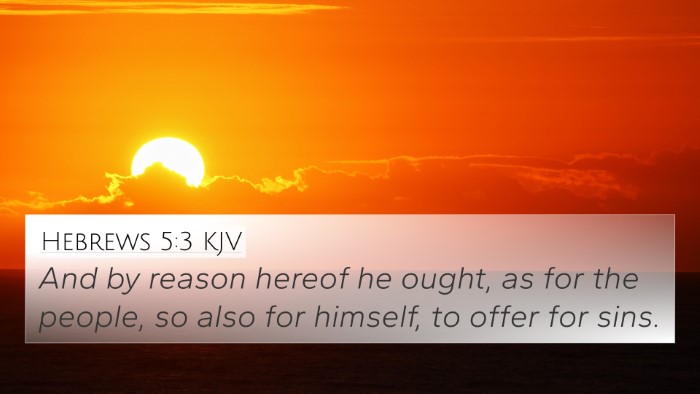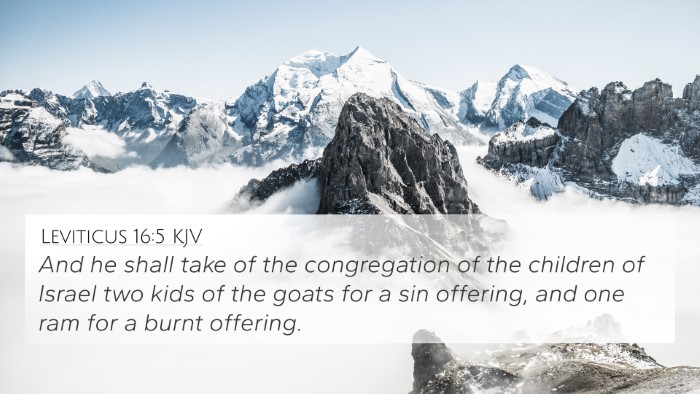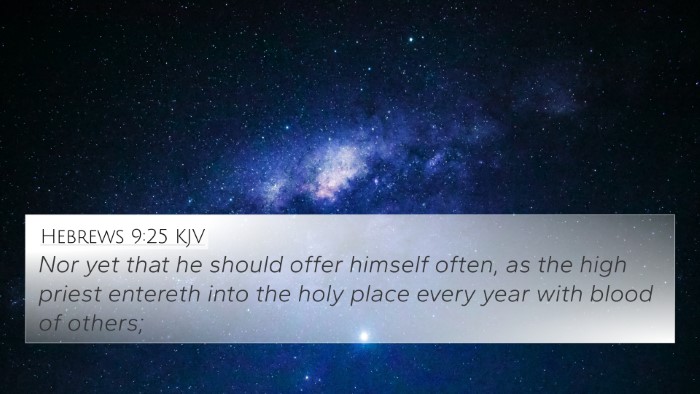Understanding Leviticus 16:15
Leviticus 16:15 states: "Then he shall kill the goat of the sin offering that is for the people, and bring its blood inside the veil and do with its blood as he did with the blood of the bull, and sprinkle it over the mercy seat and in front of the mercy seat." This verse is part of the instructions given to Aaron regarding the Day of Atonement, a significant event in the Jewish calendar, emphasizing the means by which atonement for sin is to be made. Below, we explore the insights from various public domain commentaries regarding this verse.
Commentary Insights
Matthew Henry's Commentary
Matthew Henry emphasizes the gravity of the sacrificial system established in Leviticus, illustrating how Levitical sacrifices were a foreshadowing of the ultimate sacrifice of Christ. He notes that the goat here represents the sin of the people, and the act of sprinkling its blood signifies the covering or atonement that God provides for His people’s sins.
Albert Barnes' Commentary
Albert Barnes explains the necessity of blood in the sacrificial system, citing that it symbolizes life and the seriousness of sin. He notes that the blood must be applied to the mercy seat, signifying the need for divine acceptance of the sacrifice. This act establishes a vital connection between the Old Testament sacrificial system and New Testament theology, particularly in the context of Christ's redemptive work.
Adam Clarke's Commentary
Adam Clarke provides insights into the ritual's details, explaining the role of the high priest in performing this atonement. He stresses the importance of meticulous adherence to God's instructions for sacrifice, as it reflects the holiness of God and humanity's need for reconciliation. Clarke also draws parallels to the New Testament, where Christ serves as both priest and sacrifice, fulfilling the law's requirements.
Key Themes in Leviticus 16:15
- Sacrifice for Atonement: The verse highlights the idea of substitutionary atonement, a crucial biblical theme that carries through both the Old and New Testaments.
- Blood as a Symbol: Blood is depicted as essential for atonement, representing life and the cost of sin, connecting to passages such as Hebrews 9:22.
- The Role of the High Priest: This ritual underscores the mediator role of the high priest, paralleling Christ's priestly work described in Hebrews 4:14-16.
- Holiness of God: The act emphasizes God’s holiness and the need for purification before approaching Him, as seen in Isaiah 6:5.
Cross References for Leviticus 16:15
- Hebrews 9:7: Refers to the high priest entering the Holy Place with blood.
- Exodus 30:10: Discusses the atonement made with blood once a year.
- Romans 3:25: Speaks to Christ as the propitiation through His blood.
- Matthew 26:28: Jesus references His blood of the covenant as for many for the forgiveness of sins.
- 1 Peter 1:19: The precious blood of Christ, likened to a lamb without blemish.
- Hebrews 10:4: Clarifies that the blood of bulls and goats cannot take away sins.
- Leviticus 17:11: Explains that the life of the flesh is in the blood, and it is given for atonement.
Conclusion
Leviticus 16:15 serves as a pivotal text in understanding God's provision for atonement through sacrificial rituals, which find their ultimate fulfillment in the New Testament through Christ. The connections between this verse and other biblical texts create a rich tapestry of theological understanding that emphasizes sin, redemption, and the holiness of God. Engaging with this verse through tools for Bible cross-referencing can enhance one’s study, providing deeper insights into the overarching themes of Scripture.

